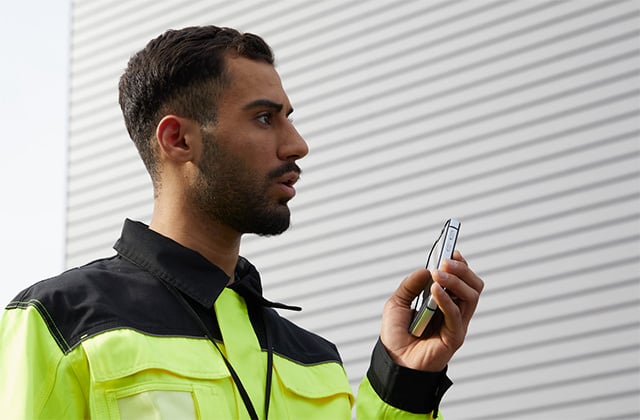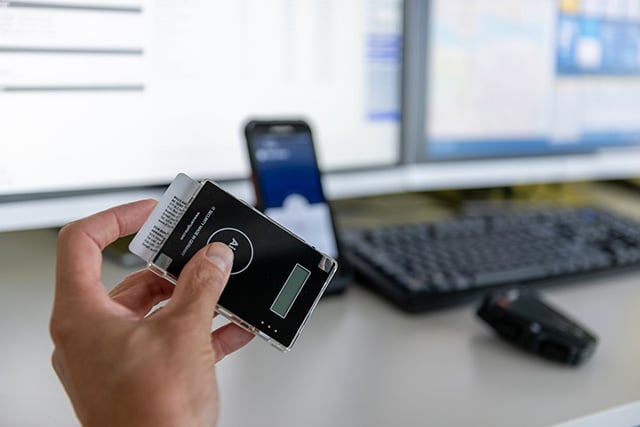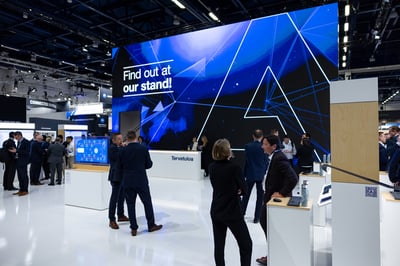Are you confused by the terms and abbreviations in broadband communications and IT? Learn these 54 terms and you will be smarter about the broadband future.
Read on and you will learn 54 terms in alphabetical order, from 3G/4G/5G/6G to zero trust. You can also jump directly to a letter using these letter links:
A B C D E F G I L M N P Q R S U V Z
1. 3G/4G/5G/6G
3G, 4G, and 5G refer to third, fourth, and fifth generations of wireless networks.
3G refers to the third generation of cellular technology. 3rd generation wireless networks were the first mobile broadband networks introduced to consumers. They are designed for voice and have a few data-based features such as text and multimedia messages.
4th generation (4G) wireless networks are based on IP (Internet Protocols). These networks are designed for data and offered the first true mobile broadband services.
5th generation (5G) wireless networks are 1000 times faster than 4G. They can deliver cutting edge social networking services and hologram transmission. Group communications are delivered as an app. 3GPP standards provide mission-critical broadband services for professionals such as public safety workers.
6th generation (6G) telecommunication standards, also referred to as ‘beyond-5G’, are under development.
Handpicked related content
Curious about the first and second generation of wireless networks, too? Download this handy infographic: "Critical communications technology from 1G to 5G".

2. 3GPP
The 3rd Generation Partnership Project (3GPP) is formed of standards organizations which develop protocols for mobile telecommunications. Its best known work is the development and maintenance of:
- GSM and related 2G and 2.5G standards, including GPRS and EDGE
- UMTS and related 3G standards, including HSPA and HSPA+
- LTE and related 4G standards, including LTE Advanced and LTE Advanced Pro
- 5G NR and related 5G standards.
Source: Wikipedia
3. AI
In its simplest form, artificial intelligence, or AI, combines computer science and robust datasets, to enable problem-solving.
John McCarthy offers the following definition for AI in this 2004 paper: "It is the science and engineering of making intelligent machines, especially intelligent computer programs. It is related to the similar task of using computers to understand human intelligence, but AI does not have to confine itself to methods that are biologically observable."
Source: https://www.ibm.com/cloud/learn/what-is-artificial-intelligence
4. API
API stands for Application Programming Interface. It is a software intermediary that allows two applications to talk to each other.
Good APIs make it easier to develop a computer program because it provides the building blocks for the programmer to put together.
An API also provides a layer of security. For example, your phone’s data is never fully exposed to the server and the server is never fully exposed to your phone. Instead, each communicates with small packets of data, sharing only those that are necessary.
Sources:
https://apifriends.com/api-management/what-is-an-api/
https://www.mulesoft.com/resources/api/what-is-an-api
5. AR
Augmented reality (AR) is an interactive experience where real objects are enhanced by a computer. The person using AR may experience computer-added visuals, sounds, and other sensations. The experience blends into the real world. In this way, AR alters the person’s perception of the real world.
The Pokémon Go game is one of the widest known applications of AR.
In contrast, Virtual Reality, or VR, replaces the real world completely with a simulated one.
Source: Wikipedia
6. Bandwidth
In digital terms, bandwidth is the absolute maximum amount of data that can be transferred through an Internet connection in a particular period of time.
Bandwidth refers to the network’s capacity to move data, not to the actual speed of the data transfer. It used to be measured in bits per second (bps), but is now more commonly measured in millions bits per second (Mbps) or Gigabits per second (Gbps).
Source: https://www.itpro.co.uk/broadband/30274/what-is-bandwidth
7. Bitstream
A bitstream is a sequence of bits. It is also known as binary sequence.
Source: Wikipedia
8. Bluetooth
Bluetooth is a technology that allows data to be exchanged between devices at a very close range. Bluetooth waves can travel a very short distance, and they are constantly switching frequencies.
Source: https://www.businessinsider.com/what-is-bluetooth
9. Cloud services
Cloud services are computer services that are delivered to companies and customers over the Internet. These services are applications and computing resources. Companies can use these services without needing their own hardware.
Source: https://www.citrix.com/solutions/digital-workspace/what-is-a-cloud-service.html
Handpicked related content
Many professional organizations see a lot of potential in having their communication services hosted in the cloud. However, they have some concerns about data security. Should they be afraid of the cloud? Do cloud services bring more benefits than they raise security concerns?
10. Co-located / co-location
Co-location is where a company houses its own servers and networking equipment in another company’s data center. It is related to hosting services. It is an alternative to using cloud services or housing servers on a company’s own site. A co-location data center is also known as a third-party data center.
Source: https://365datacenters.com/resources/white-papers/colocation-compare-public-cloud/
11. Data transfer rate
The speed at which data can be moved across a connection. It is measured in bits, kilobits, megabits, or gigabits per second.
See also: bandwidth
Source: https://www.broadbandgenie.co.uk/broadband/help/broadband-glossary-technical-terms-explained
12. Digital divide
The digital divide refers to the gap between people who benefit from the Digital Age and those who do not. People without access to the Internet and other information and communication technologies are at a disadvantage. This is because they cannot easily obtain digital information, shop online, participate democratically, or learn and offer skills.
Source: Wikipedia
13. Digital dividend
The digital dividend refers to the radio spectrum which is released as television services become digital. Part of the electromagnetic spectrum that has been used for broadcasting will be freed up, because digital television needs less spectrum than analog television.
The digital dividend usually locates at frequency bands from 174 to 230 MHz (VHF) and from 470 to 862 MHz (UHF). However, the location and size of the digital dividend can vary among countries.
Source: Wikipedia
14. Digital twin
A digital twin is a virtual representation of an object or system. The digital twin is updated from real-time data. It uses simulation, machine learning and reasoning to help decision-making.
A digital twin is a complex virtual model and an exact counterpart of a physical thing. The ‘thing’ could be a car, a building, a bridge, or a jet engine. Sensors on the ‘thing’ collect data that can be mapped onto the virtual model. Anyone looking at the digital twin can see how the physical thing is doing in the real world.
Source: https://www.ibm.com/blogs/internet-of-things/iot-cheat-sheet-digital-twin/
Handpicked related content
This webinar "IoT and AI - never before seen opportunities for public safety" also touches the topic of digital twins. Sign in and take a look at the webinar recording!
15. E2EE
E2EE stands for end-to-end encryption. This involves encrypting messages on one device so that only the device which receives it can decrypt it. The message travels all the way from the sender to the recipient in encrypted form.
The main advantage of end-to-end encryption is that only the recipient can read the transmitted data. End-to-end encryption ensures the privacy of your communication.
Source: https://www.kaspersky.com/blog/what-is-end-to-end-encryption/37011/

16. Edge computing
Edge computing brings enterprise applications closer to where data is captured, such as IoT devices or local edge servers.
Sending a lot of data from devices to a centralized data center or to the cloud needs a lot of bandwidth and causes delays. Edge computing is more efficient, as data is processed and analyzed closer to the point where it's created.
Source: https://www.ibm.com/cloud/what-is-edge-computing
17. Firewall
A firewall is a network security device that monitors incoming and outgoing network traffic. It decides whether to allow or block specific traffic based on a set of security rules.
A firewall can be hardware, software, or both. It sets up a barrier between internal networks, that can be trusted, and untrusted outside networks, such as the Internet.
See also: Zero trust
Source: https://www.cisco.com/c/en/us/products/security/firewalls/what-is-a-firewall.html
18. Fog computing
Fog computing is an alternative to cloud computing. The idea is to do as much computing as possible close to the devices that generate the data. This means that processed rather than raw data is sent to the cloud. This reduces the overall need for bandwidth, as less data can be transmitted away from data centers, across cloud channels and distances.
Fog computing is especially important to devices connected to the Internet of Things (IoT).
Source: https://www.omnisci.com/technical-glossary/fog-computing
19. Gbps
Gbps means Gigabits per second, and is related to bandwidth. An Internet connection with a larger bandwidth can move a set amount of data (a video file, for example) much faster than an Internet connection with a lower bandwidth.
Source: https://www.lifewire.com/what-is-bandwidth-2625809
20. GNSS
The term GNSS stands for Global Navigation Satellite System. This is an umbrella term that covers all global satellite positioning systems. GPS is the most widely used GNSS system in the world.
GNSS-compatible equipment can use navigational satellites from other networks such as Glonass, Beidou, and Galileo. This brings more accurate positioning and better reliability.
Source: https://www.baselineequipment.com/gnss-vs-gps-differences
21. GPS
GPS stands for Global Positioning System, originally Navstar GPS. It is a satellite-based radio navigation system owned by the United States government and operated by the United States Space Force. It is one of the global navigation satellite systems (GNSS) that can provide geolocation and time information to a GPS receiver anywhere on or near the Earth.
Source: Wikipedia
22. Industry 4.0
“Industry 4.0” refers to the fourth industrial revolution. This affects every manufacturing domain and comprises advanced manufacturing technologies that capture, optimize, and deploy data.
Industry 4.0 makes factories “smart.” It allows technologies such as the industrial Internet of Things, artificial intelligence, and cyber-physical systems to connect with each other seamlessly. Businesses that can make good use of the Internet of Things are well placed to meet future challenges.
The first three industrial revolutions that transformed the modern society were the steam engine, the age of science and mass production, and the rise of digital technology.
Sources:
https://www.bcg.com/capabilities/manufacturing/industry-4.0
https://trailhead.salesforce.com/en/content/learn/modules/learn-about-the-fourth-industrial-revolution/meet-the-three-industrial-revolutions
23. IoT
IoT refers to the Internet of Things. It means that all devices and vehicles and other objects in our professional lives and in our homes are connected via the Internet.
Handpicked related content
Check an introduction to IoT in the “15 things your boss expects you to know about RFID, NFC, and IoT” blog post.
Or you can learn about the opportunities that IoT offers. Watch a free webinar "IoT and AI - never before seen opportunities for public safety". In this webinar, top experts reveal practical use cases for the Internet of Things IoT and Artificial Intelligence AI.

24. Latency
The latency of a network is the time for a data packet to go from its source to its destination. It is also referred to as lag, or delay. Network latency is usually measured in milliseconds.
In telecommunications, low latency is usually considered a good thing.
In reliable two-way communication systems, latency limits the maximum rate that information can be transmitted. When humans use machines, a perceptible latency can annoy people and make the machine difficult to use.
The long latency of satellite communications has limited the use of broadband applications. However, the recently launched new satellite systems offer much lower latency.
Source: Wikipedia
25. LTE
Long Term Evolution. LTE is a standard for wireless broadband communication for mobile devices. 4G networks are based on LTE.
26. Malware
Malware or malicious software is any program or file harmful to a system, computer or device. Malware can steal, encrypt or delete sensitive data. It can also alter or hijack core computing functions and monitor users' computer activity without their permission.
Handpicked related content
Learn 13 important terms that are related to smartphone security: "Your ABC guide to smartphone security terms".
27. MCPTT
MCPTT stands for Mission Critical Push to Talk.
Mission critical refers to anything that is essential to an organization or to a business operation. A failure or disruption in a mission critical system would have a serious effect.
Push to talk (PTT) uses a button to switch a device from voice transmission mode to voice reception mode.
MCPTT or mission critical push to talk means push to talk over broadband that is reliable and available and allows prioritization.
Group communication apps are available over broadband. Mission-critical push-to-talk and mission-critical data (MCPTX or push-to-x) can be available as applications over 5G networks that meet mission-critical requirements.
Sources:
https://whatis.techtarget.com/definition/Push-to-Talk-PTT
Wikipedia
Handpicked related content
More on mission critical communications in the blog post "Which 3 requirements must mission critical communications meet?"
28. MCPTX
Mission critical push to X, where X is data: text, image, video, or location information, for example. See also: MCPTT
29. MNO
Mobile Network Operator, also known as a wireless service provider, wireless carrier, cellular company, or mobile network carrier.
A MNO is a provider of wireless (broadband) communications services. It has the radio spectrum license from a regulatory or government entity. It also has the network infrastructure to provide communications services to its customers.
30. MOCN
Multi-Operator Core Networks. When the Service Operator <add link to the definition> owns the core parts of the broadband network, it can deploy a so-called MOCN model. In this model, the Service Operator offers the core network services, and the MNO provides the radio access.
31. MVNE
Mobile Virtual Network Enabler. A MVNE is the company or organization that takes care of billing, network element provisioning, administration, and other broadband related tasks for the Service Operator. The MVNE in turn uses MNOs’ services for broadband access.
32. MVNO
MVNO stands for Mobile Virtual Network Operator. It is an entity that provides a broadband service to its customers without owning all or any network infrastructure. The most common set-up is that a commercial network operator provides the network to the MVNO who then sells the service to its customers.
See also: Service operator and SMVNO
33. Net neutrality
Network (Net) neutrality is the concept that all data on the Internet should be treated equally by corporations, such as Internet service providers (ISPs) and governments. The data should be treated the same regardless of content, user, platform, application, or device. This means that service providers should not slow down services or block content from users.
Source: https://www.investopedia.com/terms/n/net-neutrality.asp
34. Phishing
Phishing is a digital or electronic communication designed to trick people into taking action or giving away private information. It is a type of social engineering. The attacker’s goal is to get the information and then use it for fraudulent purposes. In some cases, the attacker’s ultimate goal is to take over a victim’s device using malware. They may also want to gain access, through the victim, to other valuable resources. These can include an enterprise’s networks, systems, data, or intellectual property.
Source: https://www.f5.com/labs/articles/education/what-is-phishing--how-to-recognize-and-avoid-it
35. Priority access
In critical communications, priority access refers to how public safety broadband users are treated. If they have priority access to the network resources, their communications are always prioritized over commercial traffic.

36. QoS
Quality of service (QoS) indicates the overall performance of a service, such as a telephony or computer network or a cloud computing service.
In critical communications, quality of service is related to the prioritization of traffic. It is the ability to provide different priorities to different applications, users, or data flows.
Source: Wikipedia
37. Radio spectrum
The radio spectrum is the part of the electromagnetic spectrum, with frequencies from 30 Hz to 300 GHz. Electromagnetic waves in this frequency range, called radio waves, are widely used in modern technology, particularly in telecommunication. To prevent interference between different users, the generation and transmission of radio waves is strictly regulated by national laws. These laws are coordinated by an international body, the International Telecommunication Union (ITU).
Source: Wikipedia
38. RAN
Smart devices use radio waves to communicate. They convert voice and data into digital signals and send these as radio waves. The smart device first connects through a radio access network (RAN).
Source: https://www.verizon.com/about/our-company/5g/5g-radio-access-networks
39. RFID
RFID - Radio Frequency Identification – is a wireless (contactless) communication technology for communication between a tag and a reader. RFID is most often used with passive tags over a few meters’ range.
Handpicked related content
What does RFID stand for? How does RFID work? Where is RFID used? Find the answers: “15 things your boss expects you to know about RFID, NFC, and IoT”
40. Roaming
Roaming is a wireless telecommunication term typically used with mobile devices, such as mobile phones. When it is roaming, the mobile phone is being used outside the range of its home network and is connecting to another available cell network.
Source: Wikipedia
Handpicked related content
The Hybrid Roaming solution in the Tactilon Dabat hybrid TETRA+LTE device means that the user will be able to communicate as long as there is either TETRA or LTE network service available. Tactilon Dabat uses the Tactilon Agnet application to move automatically from using the TETRA network to using an LTE broadband network and vice versa.
41. RSM
Remote Speaker Microphone. An RSM refers to an accessory that connects wirelessly or with a wire to a push-to-talk capable device. The RSM used with a push-to-talk capable broadband device can be carried at the shoulder or on the lapel so the user can talk without holding the device itself.
If the RSM has an integrated LTE module and external antenna, carrying it at the shoulder will minimize body loss. This improves radio range.
42. Satellite broadband
Satellite broadband refers to network connectivity provided through satellites. The term satellite Internet access is also used. The most common way to use satellite broadband is through a personal computer, satellite modem and a satellite dish:
A personal computer broadcasts requests via satellite modem to a satellite dish placed on top of a home or business.
- The dish sends and receives signals from the orbiting satellite. If the dish has a clear view, the user can receive the satellite Internet service.
- The satellite broadband device can share its Internet access via Wi-Fi or LAN with smart devices and other computers.
Satellite communication services have improved with the launch of new satellite systems. These have a smaller latency and offer higher speeds of Internet connection.
Source: https://www.techopedia.com
43. Service Operator
A Service Operator is a special, secure Mobile Virtual Network Operator (MVNO). It focuses on critical communications and provides a broadband service to its customers without owning all network infrastructure. Usually, a commercial network operator provides the radio access network or parts of it. The Service Operator owns and provides the core functionality.
Handpicked related content
Why is a Service Operator a good idea? What is the right way to complement radio communications with LTE/4G/5G? Find the answers in "Service Operators and critical communications - the essential guide"
44. SLA
SLA stands for service-level agreement. This is a contract between a service provider and its customers. The SLA documents the services that the provider will furnish and defines the service standards the provider must meet. In short, the SLA describes the performance characteristics of the service.
Source: https://searchitchannel.techtarget.com/definition/service-level-agreement
45. SMVNO
A Secure Mobile Virtual Network Operator is a MVNO that focuses on critical communications. It complies with the 3GPP standards, particularly those defined for public safety. For the user organization, a SMVNO is important because it provides the secure connection over broadband for any applications and for any devices as well as sensors and IoT.
46. Streaming
Streaming is a method of viewing video or listening to audio content without actually downloading the media files.
With streaming, the media file being played on the client device is stored remotely and is transmitted a few seconds at a time over the Internet.
Source: https://www.cloudflare.com/learning/video/what-is-streaming/
47. User
In telecommunications, a user is a person, organization, or other entity that employs the services provided by a telecommunication system. It is sometimes referred to as an end user.
The words ‘user’ and ‘subscriber’ are often used interchangeably. However, the term ‘subscriber’ refers to the customer who is paying for the service.
Source: Wikipedia
48. User equipment, UE
In critical communications, user equipment refers to any device that a user directly operates to communicate.
49. UX
UX stands for user experience – how a user interacts with and experiences a product, system, or service. (The abbreviation UE is also used.)
UX is subjective because it includes a person's perceptions of utility, ease of use, and efficiency.
Source: Wikipedia
Handpicked related content
Learn more about the mission critical user experience. Watch a free webinar "Where is the mission critical user experience heading in the next five years?".
50. Value-added service
A value-added service is a term used in telecommunications to describe non-core features. The term traditionally referred to all non-voice functions, including text messages. Today, text and multimedia messages are part of standard telecommunications services. This means that value-added services now refer to live streaming, location-based services, and online gaming, for example.
Sources: https://www.techopedia.com/definition/25234/value-added-service-vas and Wikipedia
51. VoIP
Voice over Internet Protocol (VoIP). This allows voice calls using a broadband Internet connection instead of a regular (or analog) phone line.
Source: https://www.fcc.gov/general/voice-over-internet-protocol-voip
52. VR
VR stands for Virtual Reality, a simulated experience where the person’s perception of the environment is altered using a VR headset, for example. A person experiencing VR can look around, move in the simulated environment, and interact with virtual features or items
Applications of virtual reality include gaming and training. When the VR is immersive, it changes your view according to your movements.
Source: Wikipedia
53. Zero day vulnerability
A hole in software that is unknown to the vendor but is known to hackers. This hole is then exploited by the hackers in a zero-day attack. This could involve infiltrating malware, spyware or allowing unwanted access to user information. Once the vulnerability becomes known, a race begins for the developer, who must fix the issue and protect users.
Source: https://www.securelandcommunications.com/blog/your-abc-guide-to-smartphone-security-terms
54. Zero trust
A zero-trust network is one in which no person, device, or network is trusted by default. All trust, which allows access to information, must be earned, and the first step of that is demonstrating valid identity. A system needs to know who you are, confidently, before it can determine what you should have access to.
Source: https://cloud.google.com/blog/topics/developers-practitioners/what-zero-trust-identity-security
These were the 54 top broadband terms – getting to know them will allow you to work smarter in 2022! If you think a relevant term is missing, please leave a comment to let me know.




